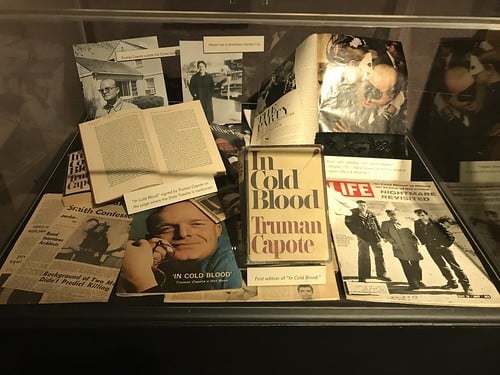For better or worse, there’s no denying America is obsessed with true crime. A huge percentage of popular podcasts deal with the subject, and with steaming giants on the rise, we have seen a surge in documentaries. Newsmagazines such as 48 Hours and Dateline NBC are some of TV’s most popular programs. 20/20 is celebrating its 42nd season, placing it among the top 50 for longest-running shows of all time.
In 2014, the podcast Serial thrust true-crime podcasts into the limelight, and since then, thousands upon thousands of true crime podcasts have emerged, investigating hundreds of cases large and small, racking up millions of listens.
With the surge in interest, comes questions. Where did this rise come from? Should Americans be worried about this seemingly massive rise in morbid curiosity?
While we can’t exactly answer the second question, we can certainly make an argument for the first. Many popular culture experts would make the argument that the true crime genre has its roots right here in Finney County, back in 1959, on a chilly night in November.
The Clutter Family Murders and In Cold Blood
While other authors had begun to experiment with the idea of using fictional tone and story structure to tell nonfiction stories, the genre became popularized by Truman Capote, in his 1966 book In Cold Blood.
In Cold Blood tells the story of the Clutters, a Holcomb family which was murdered by two drifters in 1959. Their killers were recently paroled from the Kansas State Penitentiary on the far east side of the state in Lansing, Kansas.
Acting on a tip from a cellmate of one of the killers, the two drove 400 miles across Kansas to Holcomb, where the Clutter family farm was located. They entered the house thinking Mr. Clutter had a safe full of money, which was not the case. Determined to leave no witnesses, they murdered the family and fled with $42. The pair were arrested six weeks later.
For a few days after, the grisly events made national news, and piqued the interest of Truman Capote, a writer at the top of the literary world who had just published his seminal work Breakfast at Tiffany’s.
Inspired by a short article about the murders, Capote traveled to Finney County with his friend, Harper Lee, who would later go on to write To Kill A Mockingbird.
Intrigued by the mystery and welcomed by the community, Capote would continue to spend a large amount of his time in Holcomb over the course of the next four years, until the killers’ subsequent execution and his book’s publication.
Opinions about the writer were split in Finney County, with many residents praising the care and attention Capote spent compiling facts (he once claimed to have made 8,000 pages of notes), and others arguing that the spotlight he had shined into the town’s darkest hour had led an erosion of the feelings of safety, security, and the community they’d enjoyed for so long.
Whichever side of the argument residents fell on, the book was a massive success. So successful in fact, that it served as both the highlight and lowlight of Truman Capote’s life, as it netted him millions of dollars and projected him into the minds and bookshelves of thousands of American homes, but ultimately became the last book he would ever publish, though he lived another 18 years beyond the date of its publication.
The success of In Cold Blood catapulted true crime into the zeitgeist, then in the form of the nonfiction novel, and was used with great success by writers such as Hunter S. Thompson, Norman Mailer, and Tom Wolfe.
The Town of Holcomb
The successful retelling of the events in Holcomb proved that the American public had an appetite for true crime, and that single story went on to launch a million more.
As the attention and dust settled following the publication of In Cold Blood, a sense of normalcy, albeit a new normal, returned to Holcomb Kansas. Now, fans of Capote and the true crime genre make pilgrimages to the town, to try to gain for themselves a sense of the closeness and connectedness the author felt as he worked on the book which started a movement.
And while Holcomb is just one of the many, many towns which have been mentioned ad nauseum in stories like these, Holcomb resonates just a little more because Holcomb, for better or worse, was first. The setting for America’s first and most resident story of true crime.


